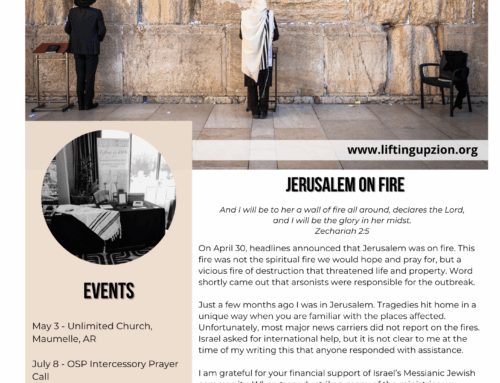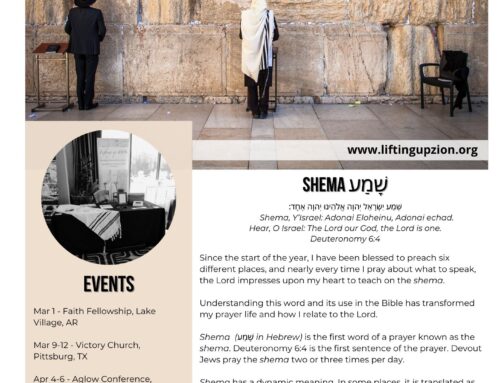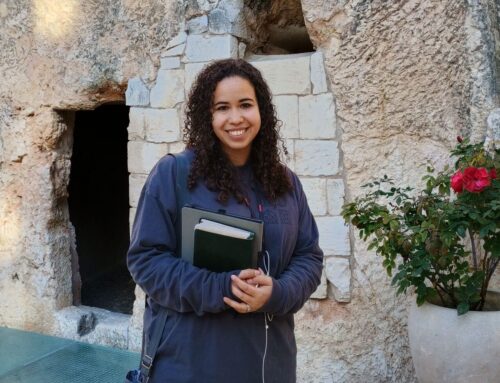In Acts 1, Jesus’s followers stood around him as he ascended into heaven. The group would, forty days later, receive power from on high to be witnesses for him (see Acts 2:1-41).
Jesus (Yeshua) made it clear that the purpose of this empowerment was for them to be his witnesses, beginning in Israel and going to all the world.
But you will receive power when the Holy Spirit has come upon you, and you will be my witnesses in Jerusalem and in all Judea and Samaria, and to the end of the earth. Acts 1:8
These followers were passionate about their newfound calling and were faithful to their witness even to death (see Acts 7:54-60; 12:1-2). One thing is true of this group: each of the first witnesses, apostles, preachers, and martyrs was Jewish.
Scholars tell us that the first 50,000 followers of Jesus were Jewish. In fact, we do not read of the first gentile convert until Acts 10, approximately seven to ten years after the ascension of Yeshua.
The Jewish believers were the leaders of all Jesus-followers throughout the text of Scripture. When a dispute broke out among Jews about what was required of gentiles who came to the faith, a council convened in Jerusalem.
During this council, the Jewish leaders decided, based upon the work of God among the gentiles and the words of the prophets, that gentiles did not have to convert to Judaism to be full covenant partners with the Jewish believers.
The Jews, however, continued to practice Jewish customs (for example, see Acts 20:16). In fact, Paul instructed believers to “remain in the condition in which he was called” (1 Cor. 7:20). Jews were to remain Jews, and gentiles were to remain gentiles (see 1 Cor. 7:17-20).
Scripture also reveals that the early gentile believers were grateful that the Lord used the Jewish people to minister the Gospel to them. In fact, Paul tells the believers in Rome:
For Macedonia and Achaia have been pleased to make some contribution for the poor among the saints at Jerusalem. For they were pleased to do it, and indeed they owe it to them. For if the Gentiles have come to share in their spiritual blessings, they ought also to be of service to them in material blessings. Romans 15:26-27
There is bountiful evidence that Jewish believers continued to follow Yeshua and live as Jews after the first century. Epiphanius, a fourth-century Church Father, said of the Jewish believers of his day that:
[They] did not call themselves Christians, but Nazarenes….[T]hey remained wholly Jewish and nothing else…Only in this respect they differ from the Jews and Christians: with the Jews they do not agree because of their belief in Christ, with the Christians because they are trained in the Law, in circumcision, the Sabbath and the other things. (Epiphanius, Panarion 29)
During the first few centuries AD, as gentile believers outnumbered Jewish believers, the relationship between the two groups changed. Especially significant was the destruction of the Temple in 70 AD. Some gentile believers came to interpret the destruction of the Temple as the Lord casting off the Jewish people.
Nevertheless, some believing groups met in relative unity during the first four centuries AD. For example, during the third century in Syria, the Didascalia Apostolorum indicates that gentile believers joined with Jewish believers to pray for the salvation of the Jewish people.
On the other hand, other groups of gentile Jesus followers persecuted the Jews, including Jewish believers in Jesus. Saint Ignatius of Antioch said in 110 AD, “It is absurd to profess Christ with the lips and at the same time to practice Judaism.”
Once Constantine came to power, it became virtually impossible for Jews to believe in Jesus and maintain their Jewish identity. In fact, it was punishable by death to profess faith in Jesus and practice Jewish customs. Therefore, there is little evidence of Messianic Judaism after the fourth century AD.
There has, however, been a continuous remnant of Jewish believers in Jesus across the span of history from the first century AD until today. They sacrificed their Jewish traditions and communities and assimilated into the larger gentile culture.
Three significant societal changes paved the way for things to shift: the Reformation, the revolution of Bible translation, and Gutenberg’s printing press invention. All of these changes occurred around the sixteenth century and allowed people to read the Bible in their own language instead of only learning from priests in Latin. The result was a transformation in Bible interpretation.
Not long after these innovations, in the 18th century, Count Nikolaus Ludwig von Zinzendorf began a 24-hour prayer ministry that ended up lasting 100 years. He became convinced that Romans 1:16 provided the right framework for world missions: that the gospel should go to the Jew first.
For I am not ashamed of the gospel, for it is the power of God for salvation to everyone who believes, to the Jew first and also to the Greek. Romans 1:16
In 1740, he added prayers for the salvation of Israel to his church’s liturgy. He started a congregation for Jewish believers to hold to their traditional customs, including celebrating biblical feasts.
Since then, Messianic Jewish congregations have appeared across the globe, including in Europe, Israel, the United States, and beyond. The movement continues to grow globally.
In Israel, the movement has tripled in the last twenty years. In 1999, Israel had 81 confirmed Messianic fellowships with approximately 5,000 regular attendees. In 2020, Israel had 280 confirmed Messianic fellowships with 15,323 confirmed regular attendees.
The Lord is moving among the Jewish people and opening their eyes to the reality that Yeshua (Jesus) is their promised Messiah.
Let’s continue to partner with the Lord’s work among the Jewish people by praying for the salvation of Israel and contributing financially to the Messianic Jews.






